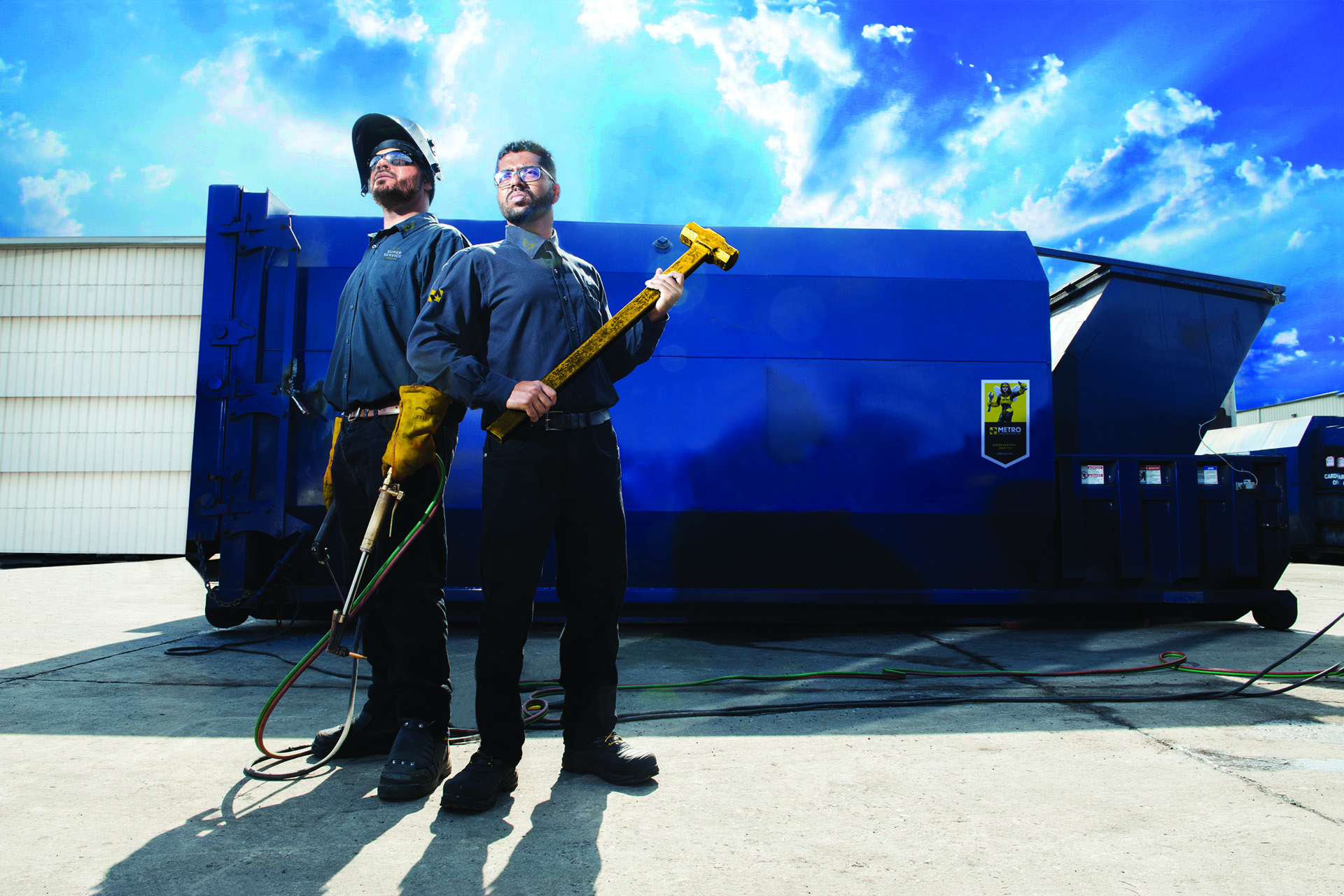Cardboard Baler Rental to Maximize Your Recycling Procedures
Cardboard Baler Rental to Maximize Your Recycling Procedures
Blog Article
Evaluating the Cost-Effectiveness and Ecological Benefits of Spending in Advanced Waste Tools for Organizations and Organizations
The choice to purchase innovative waste tools is progressively essential for businesses aiming to boost both their financial and environmental efficiency. Evaluating the cost-effectiveness of such financial investments exposes capacity for considerable cost savings, particularly with decreased functional prices and boosted source monitoring. The ecological benefits-- such as reduced landfill use and reduced emissions-- contribute to a much more sustainable functional structure. The effects of this investment prolong beyond mere numbers, increasing important inquiries concerning long-lasting viability and regulatory compliance. As organizations browse these intricacies, the course onward becomes intriguing.
Recognizing Advanced Waste Devices
Advanced waste equipment incorporates a variety of innovative modern technologies created to improve waste administration procedures effectively. This devices includes automated sorting systems, compactors, shredders, and advanced recycling machinery, all focused on enhancing effectiveness and lessening environmental effect. The main purpose of innovative waste equipment is to enhance the collection, processing, and disposal of waste products, thus minimizing labor expenses and enhancing operational effectiveness.
One notable technology is making use of smart waste containers furnished with sensors that keep track of waste levels and enhance collection routes. This not just lowers unnecessary pickups but also lowers fuel consumption and greenhouse gas exhausts. Additionally, advanced shredders and compactors promote the decrease of waste volume, which is crucial for maximizing land fill area and boosting reusing efforts.
Additionally, the integration of artificial knowledge and equipment learning in waste monitoring systems enables boosted data analytics, bring about educated decision-making and enhanced source allocation. By utilizing these modern technologies, services and companies can achieve considerable enhancements in waste administration processes, ultimately leading to much better sustainability results and conformity with regulative criteria.
Price Analysis of Financial Investment
Examining the expense analysis of investment in innovative waste equipment is vital for organizations seeking to boost their waste monitoring practices. A comprehensive price analysis involves assessing both the preliminary funding outlay and ongoing functional expenditures connected with obtaining and maintaining such tools. This includes not only the purchase price but also installation costs, training for personnel, and potential downtime throughout the transition period.
Organizations have to also consider the various kinds of sophisticated waste equipment readily available, such as compactors, shredders, and recycling systems, each with unique prices frameworks. The monetary implications of equipment performance should be reviewed, as much more effective systems may lead to decreased waste disposal fees and reduced source intake.
Additionally, potential funding sources and motivations, such as government gives or tax obligation credit histories, can dramatically influence the overall expense evaluation. By performing a comprehensive exam of these factors, companies can make educated choices that line up with their sustainability goals while making sure a sound financial investment (baler rental). Ultimately, an in-depth cost analysis lays the structure for comprehending the monetary feasibility and critical benefits of buying advanced Visit This Link waste administration innovations

Long-Term Savings Possible
Investing in sophisticated waste equipment not just entails an upfront financial commitment but additionally unlocks to significant long-term cost savings possibility. Services and organizations that execute such technology can expect to see a decrease in functional prices over time. Advanced waste tools typically improves waste monitoring procedures, causing reduced labor costs and improved efficiency.
By automating waste sorting and processing, organizations reduce the need for manual labor, permitting team to concentrate great site on more value-added activities. Moreover, enhanced waste administration systems can lessen the volume of waste that ends up in landfills, which ultimately reduces disposal charges and potential governing fines related to waste mismanagement.
Along with route cost savings, organizations can likewise experience better income possibilities. Reusing programs can create revenue from the sale of retrieved products. Furthermore, a commitment to advanced waste administration can improve a firm's reputation, drawing in ecologically aware consumers and clients, which may result in enhanced market share.
Environmental Impact Assessment
Just how do sophisticated waste administration systems contribute to environmental sustainability? The application of these systems enables for the reliable separation of recyclable products, which can substantially decrease the quantity of waste guided to garbage dumps, consequently lowering methane exhausts and other unsafe toxins connected with waste decay.
Additionally, advanced waste monitoring services are created to lower energy intake and boost operational efficiency. For example, energy-efficient equipment not only decreases total power use yet additionally decreases greenhouse gas emissions, lining up with global sustainability objectives. In addition, the adoption of these systems can promote a society of ecological obligation within organizations, encouraging staff members to participate in lasting techniques.
Carrying out a detailed ecological effect evaluation of these systems reveals their potential benefits, including boosted air and water quality, biodiversity preservation, and boosted area health. Inevitably, buying innovative waste administration technology represents a calculated method to achieving long-term environmental sustainability while advertising economic practicality.
Case Researches and Real-World Examples
Countless study highlight the performance of sophisticated waste monitoring systems in advertising ecological sustainability across various sectors. For example, a leading manufacturing firm adopted automated waste sorting modern technology, which led to a 40% decrease in landfill waste within the first year. look at here now This investment not only improved operational performance however additionally significantly reduced disposal prices, showcasing a strong roi.
In the friendliness sector, a major resort chain executed an innovative food waste food digestion system that converted organic waste right into tidy power. This campaign decreased waste outcome by 50% and provided the hotel with a lasting power resource, highlighting both economic and ecological benefits.

These real-world examples show that businesses can attain considerable expense financial savings while boosting their sustainability profiles via calculated investments in advanced waste monitoring technologies. As these study expose, the combination of cutting-edge waste remedies is not only feasible yet also important for modern-day business intending to line up with environmental requirements and customer expectations.
Final Thought
Financial investment in innovative waste tools becomes a critical choice for companies looking for to enhance cost-effectiveness and ecological sustainability. By automating waste sorting and leveraging wise innovations, organizations can accomplish significant decreases in functional prices and garbage dump contributions. The long-term monetary advantages, combined with a positive ecological effect, add to improved business track record and regulative compliance. Inevitably, the integration of such innovations cultivates a culture of sustainability, aligning organization experiment modern environmental obligations.
Report this page